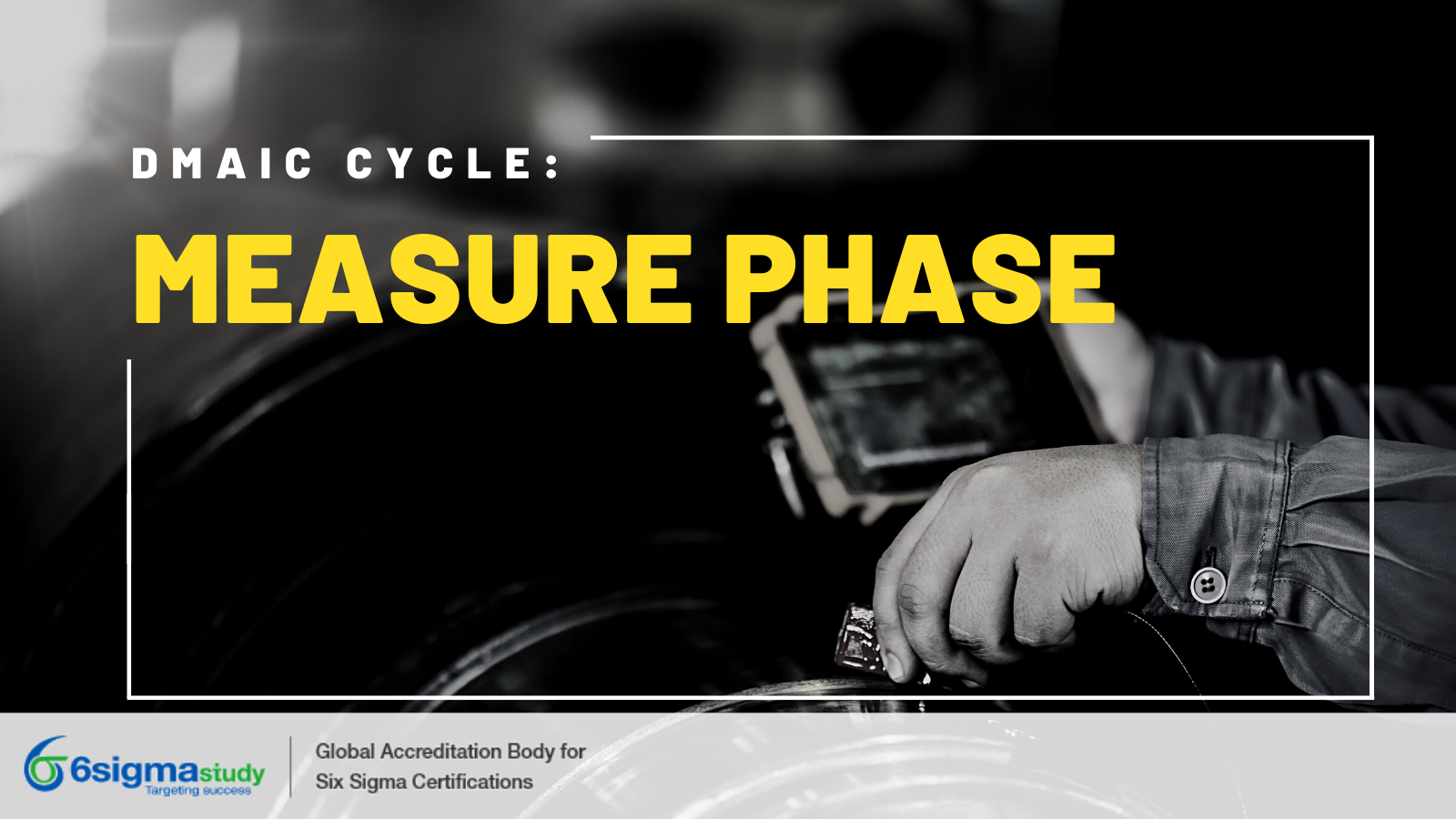Measure Phase
Posted by 6sigmastudy® on July 14, 2021 | DMAIC & DMADV
Keywords: Six Sigma 6sigmastudy Six Sigma Yellow Belt (SSYB™) Six Sigma Green Belt (SSGB™) Six Sigma Black Belt (SSBB™) Lean Six Sigma Green Belt (LSSGB™) Lean Six Sigma Black Belt (LSSBB™) Free Articles Free Six Sigma Articles TQM Six sigma measure dmaic dmadv
‘Measure’ is the second phase in the Six Sigma DMAIC (Define, Measure, Analyze, Improve, and Control) cycle. Compared to the ‘Define’ phase, where the problem statement is created, business problems are discussed and goals are defined, the ‘Measure’ phase engages in gathering information or data for the current process. The overall performance of the business process is analyzed and measured in this phase. The activities in the Measure phase include:
-
Process Mapping.
-
Data Collection.
-
Data Evaluation.
-
Identification of all possible causes and effects of a problem.
A process can be taken as a set of connected activities that get inputs, consumes resources, and produces outputs. The process adds value to the inputs and makes outputs more useful and effective to the customers. A process flow chart or a process map is a graphic display of all the activities in a process. It is a visual representation that illustrates processes in the organization displaying the sequence of tasks carried out and their relationships. Process mapping shows a flow of activities in which a well-defined set of inputs are converted into a pre-determined set of outputs. It is very effective while gathering the voice of the customer or VOC which demonstrates the overall process outputs and requirements of clients. Process mapping is carried out with the help of SIPOC, a graphical representation of the end-to-end process, showing how it serves the customer. It provides an overall understanding of the processes in the project and gives a common frame of reference for all team members.
Data collection is another important activity in the ‘Measure’ phase of the DMAIC cycle. Data comprises facts, concepts, and instructions in a formalized manner suitable for communication and interpretation. There are mainly two types of data: Continuous Data and Discrete Data.
After data is collected, the next important step performed in this phase is ‘Data Evaluation’. The collected data is evaluated and the value of sigma is calculated which gives an approximate number of defects in the process.
Some of the important tools and techniques used in this phase are:
-
Business Process Management
-
Ishikawa Diagram
-
Relational matrices
-
Prioritization matrix
-
Measurement scale
-
Gauge R and R study
To read more on the next phase of the DMAIC Cycle, please visit here

